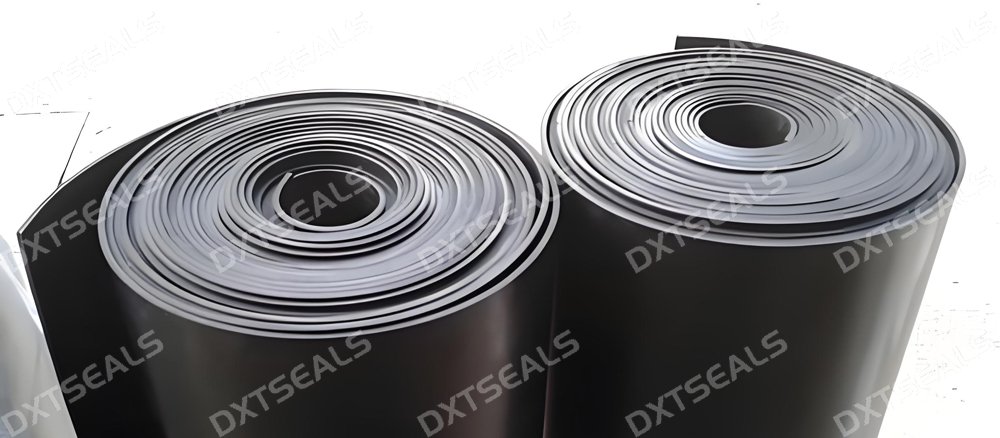
In the ever-evolving world of material science, rubber-plastic composites have emerged as a versatile and high-performance solution for a wide range of industrial applications. By combining the elasticity of rubber with the strength and moldability of plastic, these composite materials offer unique advantages that outperform traditional materials in many settings.
At DXTSEALS, we leverage our expertise in rubber and plastic processing to develop customized composite solutions that meet the demands of today's advanced engineering requirements.
🔍 What Are Rubber-Plastic Composites?
Rubber-plastic composites are hybrid materials created by physically or chemically combining rubber and plastic polymers. These composites aim to integrate the flexibility and impact resistance of rubber with the rigidity, light weight, and processability of plastics, resulting in products with balanced mechanical and thermal properties.
Commonly Used Plastics in Composites:
-
Polypropylene (PP)
-
Polyethylene (PE)
-
Polystyrene (PS)
-
Thermoplastic Elastomers (TPE)
Commonly Used Rubbers:
-
Natural Rubber (NR)
-
Ethylene Propylene Diene Monomer (EPDM)
-
Styrene-Butadiene Rubber (SBR)
-
Nitrile Butadiene Rubber (NBR)
⚙️ Key Advantages of Rubber-Plastic Composites
✅ 1. Enhanced Flexibility and Strength
These materials offer better elasticity than rigid plastics while maintaining greater strength and structure than pure rubber.
✅ 2. Excellent Impact and Vibration Resistance
Ideal for automotive and machinery parts that require shock absorption.
✅ 3. Superior Weather and Chemical Resistance
Composites can resist UV radiation, ozone, oils, and chemicals, extending the product’s life in harsh environments.
✅ 4. Improved Processability
Composites can be injection molded, extruded, or compression molded, supporting high-efficiency manufacturing.
✅ 5. Cost-Effective Customization
The ability to fine-tune the ratio of rubber to plastic allows for application-specific property optimization.
🏭 Common Applications
Rubber-plastic composites are widely used across multiple industries due to their adaptability:
-
Automotive: Seals, bushings, flexible connectors, bumpers
-
Construction: Expansion joints, vibration dampers, window/door seals
-
Consumer Products: Grips, handles, sports equipment
-
Medical Devices: Flexible housings, tubing, protective covers
-
Electronics: Gaskets, cable protectors, anti-vibration mounts
🧪 Material Innovation at DXTSEALS
At DXTSEALS, we specialize in developing custom rubber-plastic composite components tailored to your operational requirements. Whether you need enhanced chemical resistance, weatherproofing, or thermal stability, our R&D team works closely with clients to select the right materials and manufacturing process.
Our capabilities include:
-
Custom TPE/TPV blends
-
Overmolding of rubber on plastic substrates
-
Co-extrusion and compression molding
-
Precision CNC finishing for composite parts
📝 Conclusion
Rubber-plastic composites represent a new frontier in industrial materials, combining the best characteristics of both base materials to enhance product performance, extend service life, and reduce maintenance needs. Whether in automotive, construction, or electronics, these composites offer scalable, cost-effective solutions to modern engineering challenges.
🔗 Learn more about our custom rubber and plastic solutions at www.dxtseals.com
DXTSEALS – Custom Composite Solutions for the Demands of Tomorrow
